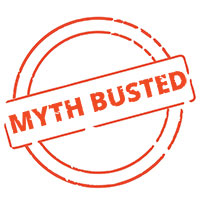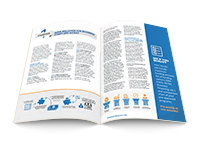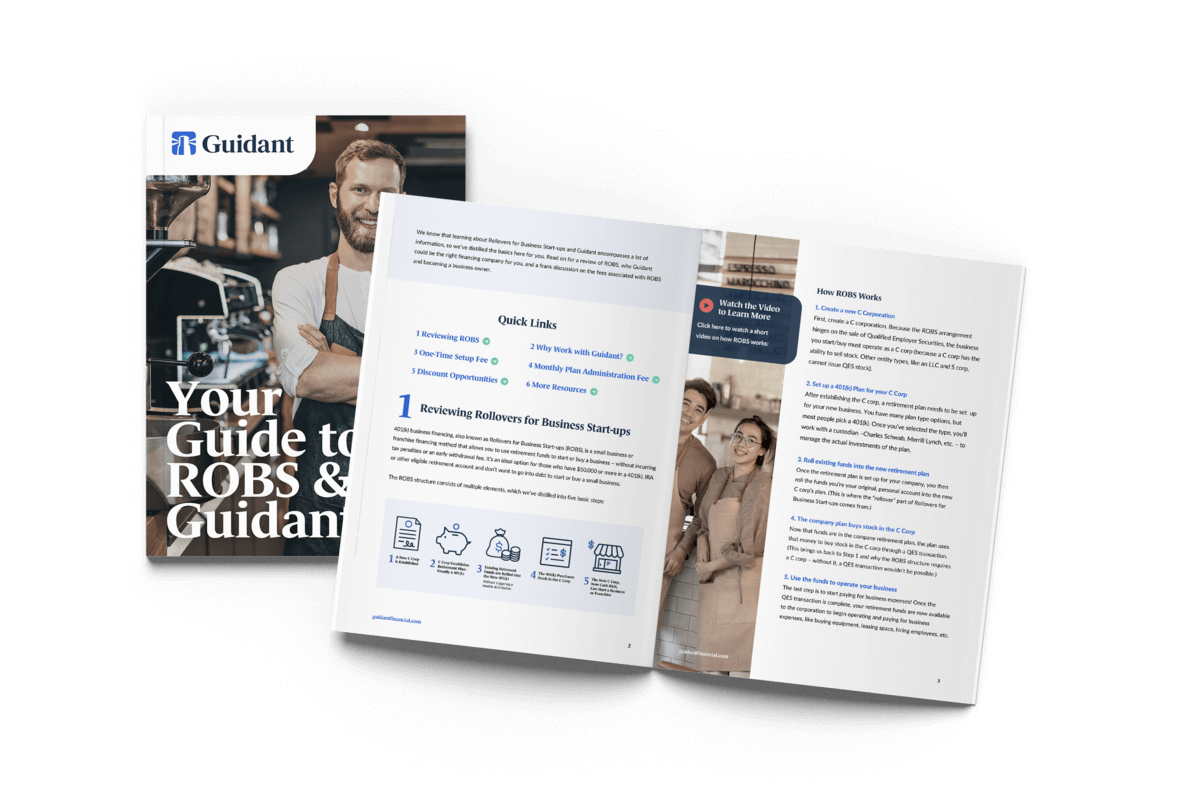Debunking Common Myths About ROBS
Over time, misconceptions about Rollovers for Business Start-ups (ROBS), also known as 401(k) business financing, have cropped up. To clear up the confusion, we’ve addressed the most common myths in this chapter.
Separating Fact from Fiction About ROBS
Despite its origin in 1974, Rollovers for Business Start-ups (ROBS), still isn’t a well-known small business financing option. Even with increased popularity in the last decade, misinformation remains about this business funding option. Let’s address a few myths surrounding Rollovers for Business Start-Ups:

ROBS is tax avoidance.
Using ROBS to fund your business or franchise is in no way tax avoidance. In 1974, Congress enacted the Employee Retirement Income Securities Act (ERISA). ERISA, in conjunction with sections of the Internal Revenue Code, provides workers with another vehicle for building retirement assets. That’s ROBS.

ROBS is a loan.
ROBS is NOT a loan. It’s an entirely debt-free financing solution. With this funding solution, you invest your retirement funds into your new business or franchise. One of the major benefits of ROBS is being able to enter business ownership without the burden of loan payments or interest. Eighty-one percent of Guidant clients who use ROBS are still in business after four. That’s almost double the success rate of small business owners who start a business with only debt financing.

Absentee business owners can use ROBS.
Anyone who uses Rollovers for Business Start-ups must be a bonafide employee of their business. This is the fifth pillar of the ROBS structure, which we discussed in-depth in Chapter 1. Guidant suggests you work at least 500 hours per year to be considered a bonafide employee. That means silent investors and absentee owners are ineligible for ROBS financing.

Your company must be a C Corp to use ROBS.
This one is true. One of the requirements of the ROBS structure is that the operating company be a C corporation. Many clients form subsidiary LLCs underneath the umbrella C corp. Here, the C corp is the parent company and a 100 percent owner of the LLC. This entity structure can add a protective layer of liability between the operating business (the LLC) and the C corp.

Getting funding with ROBS can take months.
The ROBS funding process can take as little as four weeks if you use a qualified and experienced provider. Because there are few eligibility requirements and no application, the ROBS process moves quickly. These factors most impact timing:
- How fast you file the necessary paperwork
- The speed that your current custodian (the firm that handles your original retirement account) releases your funds
- Which state the corporation is filed in – some states are faster than others.

Your retirement account is not diversified with ROBS.
A typical retirement account is invested in a variety of options within the stock market. This keeps it diversified between industries and types of investments. The fear behind this ROBS myth is that by rolling over your retirement assets to invest in a single business (your own), you’ll lose the diverse investment portfolio.
Many people roll only a part of their retirement funds into the new business. The rest can remain in the 401(k) plan and invest in more traditional investments like stocks, bonds, and mutual funds. Or it can be in another retirement account altogether. ROBS can also be used with other financing options like SBA loans, seller financing, or portfolio loans – further increasing your investment options.

ROBS and self-directed IRAs are the same thing.
While ROBS and self-directed IRAs (SDIRAs) both serve the purpose of financing a business, there are major differences between the two. People who use an SDIRA cannot work for the business they invest in or take a salary, while ROBS users have to work for the business and to take a salary. The amount invested with an SDIRA may be liable for the unrelated business income tax (UBIT), which can get very expensive, very quickly.
Learn more about the differences between ROBS and SDIRAs here.

ROBS cannot finance franchises.
While the name ‘Rollovers for Business Start-ups’ suggests ROBS is only for small businesses, that’s not the case. After all, a franchise is a small business too! Each franchise location is still owned and run by independent business owners, regardless of the franchise brand it operates under. ROBS can be used with a variety of business purchases: start-ups, first-time franchise locations, existing small businesses, and existing franchises. These are all small businesses and can get financing with ROBS.
Many top franchise brands point their franchisees toward ROBS as a quality financing option. It doesn’t matter if you want to build a new location or buy an existing one – ROBS works for both.

You have to quit your job to use ROBS.
Accessing funds from a pre-tax retirement account before you retire or leave the company can be difficult, but it's not impossible. Using an in-service rollover lets you access retirement funds from your current employer's plan and roll them into a new retirement account while you're still working there. Note that if you're younger than 59 and 1/2 , you'll only be able to roll fully vested, employer-matched funds into the new retirement account.
Learn more about using ROBS to fund your small business while keeping your job.
Pre-Qualify Today!





















